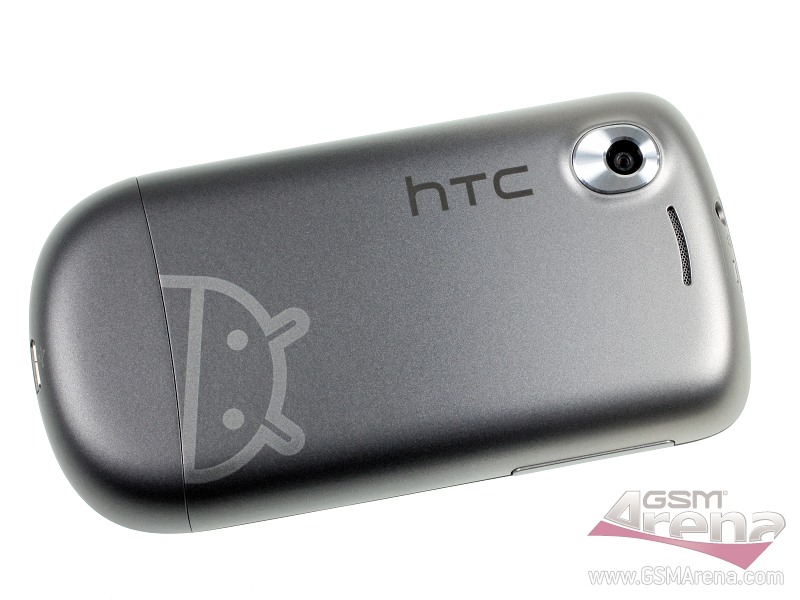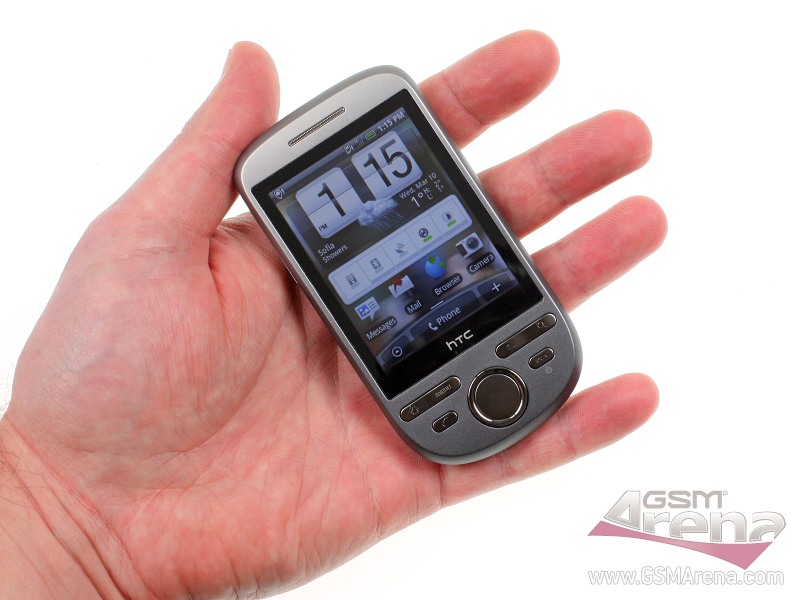
Network and Connectivity
HTC Tattoo was released in September 2009, featuring GSM and HSPA technology. It supported 2G bands ranging from GSM 850, 900, 1800, to 1900 MHz and 3G bands over HSDPA 900 and 2100 MHz, allowing users to experience seamless connectivity with a speed of HSPA 7.2/0.384 Mbps. This ensured that users could rely on this device for relatively quick browsing and data usage, aligning with the technology standards of its time.
Design and Build
The body of the HTC Tattoo was compact, with dimensions of 106 x 55.2 x 14 mm, making it easy to handle and carry. The phone weighed approximately 113 grams, adding to its portability. It was designed to use a Mini-SIM, which was typical for the smartphones of that period. The overall build promoted durability while maintaining a user-friendly design, catering to a wide audience with its various color options, including Brown, White, Graphite, Black, and Violet.
Display
The HTC Tattoo came equipped with a 2.8-inch TFT resistive touchscreen, which displayed 65K colors. Given its size, the display was compact, with a screen-to-body ratio of about 41.5%. The resolution of 240 x 320 pixels and a pixel density of around 143 ppi provided a reasonable quality of visuals for the period, though it was less advanced compared to the high-resolution displays of later smartphones.
Platform and Performance
This device operated on Android 1.6 Donut with HTC's Sense UI, offering an intuitive interface that was user-friendly. The chipset powering the HTC Tattoo was the Qualcomm MSM7225 Snapdragon S1, coupled with a 528 MHz ARM 11 CPU. Although the phone did not have a dedicated GPU, the configuration was adequate for handling basic applications and functions without excessive lag, suitable for typical daily tasks.
Memory and Storage
The internal storage capacity of the HTC Tattoo was 512MB, complemented by 256MB of RAM. For users requiring additional storage space, there was a dedicated microSD card slot, which allowed for expandable storage to manage more data and applications. Although limited by modern standards, this configuration provided a reasonable balance of storage options for basic smartphone operations at the time.
Camera Capabilities
The HTC Tattoo featured a single rear camera with a 3.15 MP resolution, capable of recording CIF quality video at 15fps. While this might seem limited today, it offered sufficient capabilities for basic photography and video recording. The absence of a front selfie camera reflected the design priorities of the smartphone market in 2009, which focused more on basic communication and connectivity over advanced multimedia functionalities.
Sound and Audio Features
In terms of audio, the HTC Tattoo included a loudspeaker and supported a 3.5mm audio jack, which was standard for personal listening via headphones. The audio outputs were functional for voice calls and multimedia playback, providing users with essential audio features without requiring additional accessories for listening to music or making calls.
Communication and Connectivity
The device supported Wi-Fi 802.11 b/g, along with Bluetooth 2.0 (with A2DP support), enabling wireless connectivity for data sharing and wireless networking. Positioning was supported via GPS and A-GPS, enhancing its utility for navigation and location-based services. Additionally, it featured a stereo FM radio with RDS and had miniUSB support for data transfer and charging.
Additional Features
HTC Tattoo incorporated a set of sensors, including an accelerometer and a compass, enhancing its capability to support a range of applications and features like screen rotation and navigation. The device also included an HTML browser, offering basic web browsing capabilities. These features positioned the HTC Tattoo as a versatile device, accommodating various user needs through practical technology.
Battery Life
Powering the device was a removable Li-Ion 1100 mAh battery, offering a respectable standby time of up to 340 hours on 2G and up to 520 hours on 3G. The talk time was up to 6 hours and 30 minutes on 2G networks and up to 5 hours and 40 minutes on 3G, emphasizing the balance between portability and battery longevity. The removable nature of the battery was also a beneficial feature, allowing users to easily replace it if needed.
Market Position and Reception
At its release, the HTC Tattoo was priced at approximately 60 EUR, making it an attractive option for budget-conscious consumers seeking a smartphone with essential features. Its blend of affordability, functionality, and customizable options contributed to its appeal, especially for those new to the Android ecosystem. The device catered to users who desired the flexibility of Android OS without investing in higher-end models.
Performance Tests
According to various tests, the HTC Tattoo's camera performance was considered average for its 3.15 MP sensor. In terms of audio, the loudspeaker levels were measured to deliver acceptable voice and ring notifications, while the audio quality benchmarks highlighted noise and crosstalk levels typical for devices of its class during that period.
Final Thoughts
The HTC Tattoo serves as an interesting historical device in the evolution of smartphones, capturing the transition from basic mobile phones to multifunctional portable devices powered by an open-source operating system like Android. While it may not boast the features seen in today's cutting-edge models, it stands as a testament to the rapid advancements in technology and consumer expectations in just over a decade.
Key Features of HTC Tattoo
- Network Technology: GSM / HSPA
- Compact Dimensions and Lightweight: 106 x 55.2 x 14 mm, 113 g
- Display: 2.8 inches TFT resistive touchscreen
- Operating System: Android 1.6 (Donut) with Sense UI
- Processor: Qualcomm MSM7225 Snapdragon S1, 528 MHz ARM 11
- Expandable Storage: microSD support with dedicated slot
- Main Camera: 3.15 MP
- Connectivity: Wi-Fi 802.11 b/g, Bluetooth 2.0, GPS, Stereo FM radio
- Audio: Includes 3.5mm jack and loudspeaker
- Sensors: Accelerometer and compass
- Battery Life: Up to 340 h standby (2G), Up to 520 h (3G)
- Variety of Color Options: Brown, White, Graphite, Black, Violet
HTC Tattoo Drawbacks
- Discontinued status, limiting updates and support.
- Low-resolution display at 240 x 320 pixels, resulting in poor clarity.
- Resistive touchscreen, which may be less responsive than capacitive screens.
- Limited internal storage with only 256MB RAM and 512MB internal memory.
- Outdated operating system, Android 1.6 (Donut), limiting app compatibility.
- Weak CPU performance with a 528 MHz ARM 11 processor.
- No GPU, limiting graphics performance for games and apps.
- Low-quality camera with only 3.15 MP and limited video recording capabilities (CIF@15fps).
- Lack of a front-facing camera for selfies and video calls.
- MiniUSB port, which is outdated compared to MicroUSB or USB-C.
- Small battery capacity (1100 mAh), potentially leading to limited battery life.






















View Also
More Phones
All Rights Reserved +14266 Phones © Mobilawy 2025

























